A Short History of Audio Recording
Thomas Edison -- 1877 -- First sound recording on foil cylinder
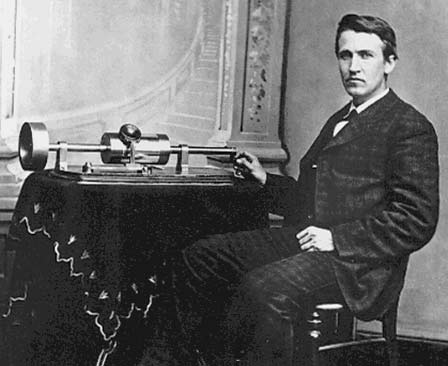
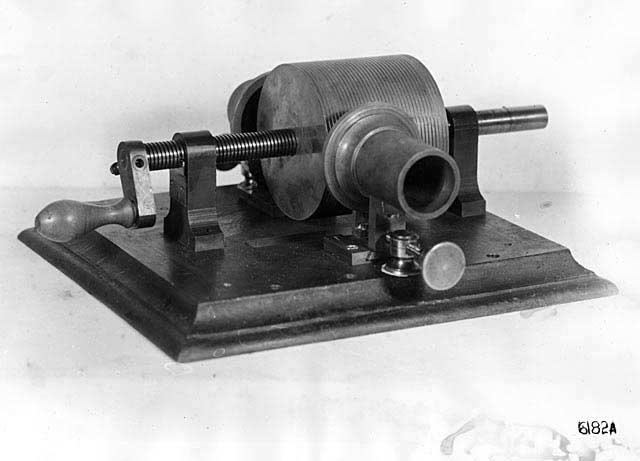
Edison's possible uses for the phonograph
Ever practical and visionary, Edison offered the following possible future uses for the phonograph in North American Review in June 1878:
- Letter writing and all kinds of dictation without the aid of a stenographer.
- Phonographic books, which will speak to blind people without effort on their part.
- The teaching of elocution.
- Reproduction of music.
- The "Family Record"--a registry of sayings, reminiscences, etc., by members of a family in their own voices, and of the last words of dying persons.
- Music-boxes and toys.
- Clocks that should announce in articulate speech the time for going home, going to meals, etc.
- The preservation of languages by exact reproduction of the manner of pronouncing.
- Educational purposes; such as preserving the explanantions made by a teacher, so that the pupil can refer to them at any moment, and spelling or other lessons placed upon the phonograph for convenience in committing to memory.
-
Connection with the telephone, so as to make that instrument an auxiliary in the transmission of permanent and invaluable records, instead of being the recipient of momentary and fleeting communication.
North American Review , June 1878
Early-1880s -- Novelty wore off for the public and Edison concentrated on the incadescent light bulb.
1886 -- Alexander Graham Bell and Charles Sumner Tainter improved Edison's invention with wax instead of foil and a floating stylus. Patented it as the Graphophone.
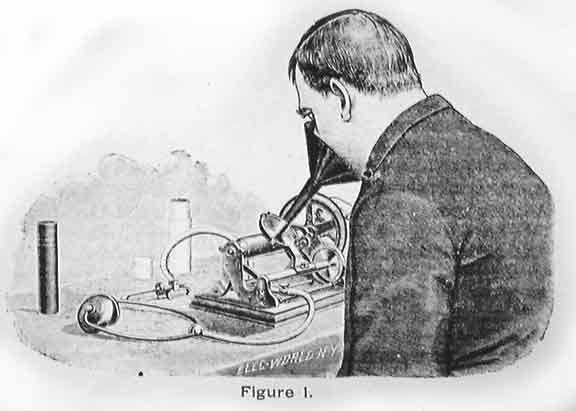
1887 -- Edison Phonograph Company formed to market Edison's New Phonograph, Improved Phonograph (1888) and Perfected Phonograph.

1888 -- Businessman Jesse H. Lippincott assumed control of American Graphophone Company and purchased (on credit) Edison Phonograph Company, forming the North American Phonograph Company.
- Leased machines to businesses for dictation
- Strongly opposed by stenographers
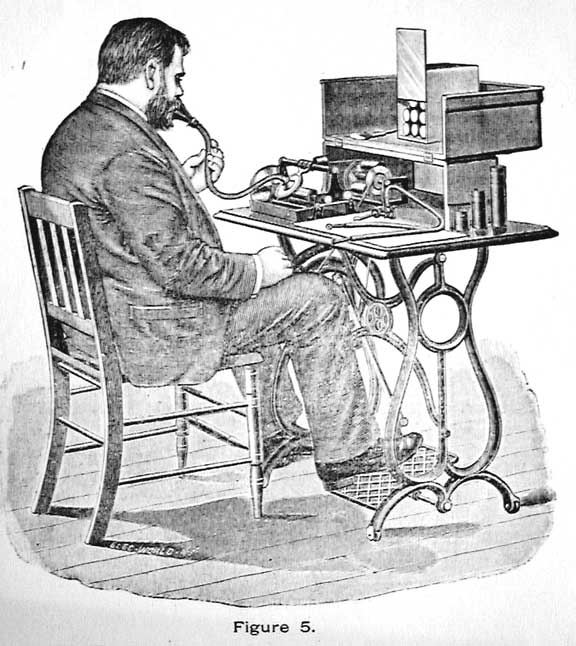
1890 -- Edison Phonograph Toy Manufacturing Company. Talking dolls and coin-slot phonographs.
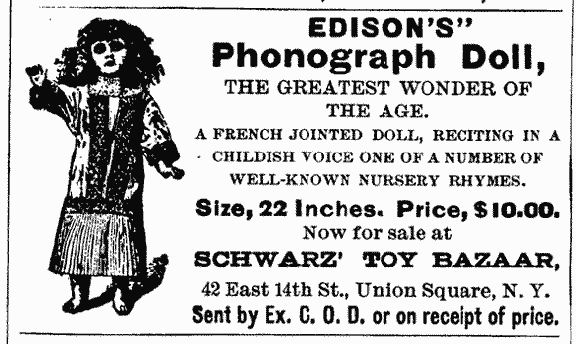
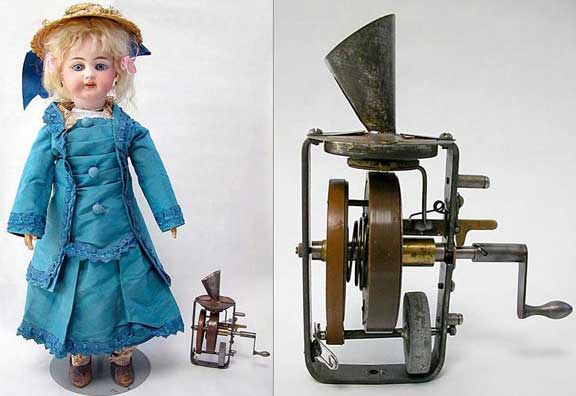
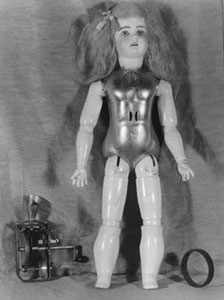
1890 -- Lippincott falls ill and control of North American Phonograph Company reverts to Edison.
- Sold machines instead of leased them
- Changed little else
1894 -- Edison declares backruptcy, in part to buy back all rights to his invention.
1896 -- Edison Home Phonograph sold machines for home use
- 2 minute maximum length
- Each cylinder recorded individually by artist
- Concert Phonograph (1899) sold for $125, cylinders cost $4


1901 -- Mass production of wax cylinders

- 120-150 cylinders could be produced in a day
- Cost lowered to 35 cents
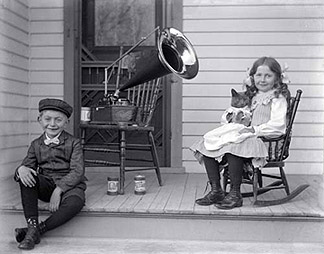

1905 -- Discs begin to replace cylinders. Victor Talking Machine Company's (founded in 1901)& Columbia records compete with Edison.
- 10" discs would record 5 minutes
- Victrola sells 65,591 units
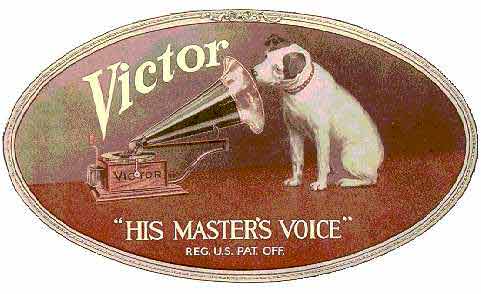
1906 -- Victrola Introduced (invented by E.R. Johnson)
- The first internal horn phonograph
- Sold for $200 ($3,700 today). Even at this price, the Victrola is an instant success, producing over 500 machines by year's end.
1910 -- Edison selling internal-horn, table-top players
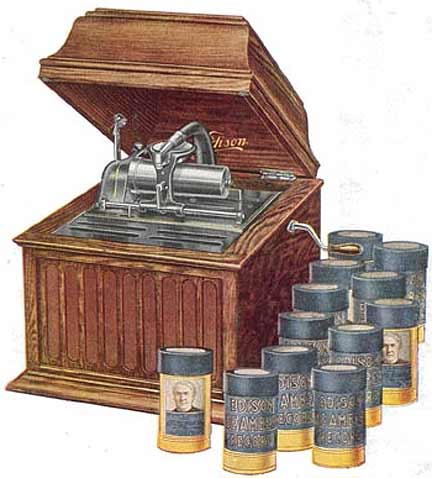
1911 -- Edison Disc Phonograph unveiled, but not sold until 1912.
- Cabinets were considered less attractive than Victrola
- Only Edison discs could be played on Edison Phonographs
- Phonographs cost $150-$250
- Discs cost $1.15-$4.25 (soon reduced to $1.35-$2.25)

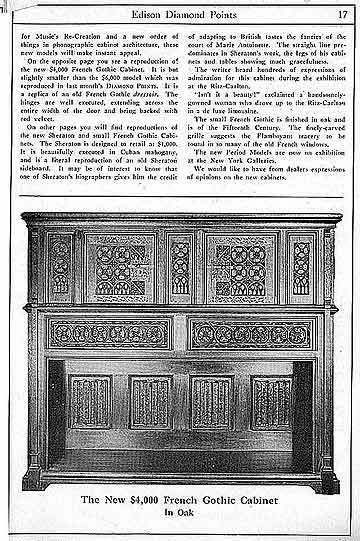
1911 -- Victor announces the Victrola IX early in the year. First truly low-cost internal horn tabletop model selling for $50 ($900 today)
- The Victrola VIII, Victrola VI and Victrola IV are introduced in the fall.
-
- The IV is priced at a mere $15.00 ($275.00 in today's money), making it the lowest cost internal model Victor ever produced.
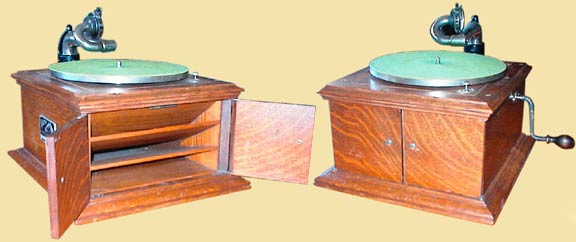 - Victrola (internal horn) sales exceed sales of the external horn Victor phonographs for the first time. Victor sales at a record 125,000 for the year.
1912 -- Victor sales nearly double from the previous year.
- Production now at 252,000.
- 90% of production is the internal horn Victrola models.
1916 -- Public address amplifiers and speakers developed by AT&T
1917 -- Victor reaches all-time production high of 573,000 phonographs.
- Only about 6,000 are external-horn machines (discontinued 1920)
1917 -- Brunswick joins the market with Untona Reproducer.
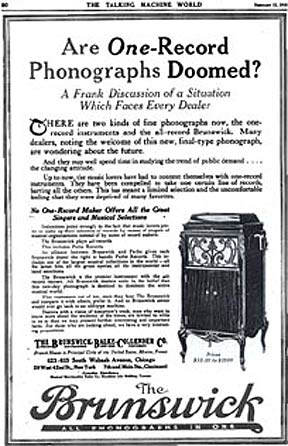
- It is designed to play the three main types of discs sold in that period:
- normal lateral shellac (Victor and Columbia 78s)
- vertical cut shellac (Pathe)
- vertical cut Diamond Discs (Edison)
- The reproducer has four movable parts which can be adjusted to play any record.
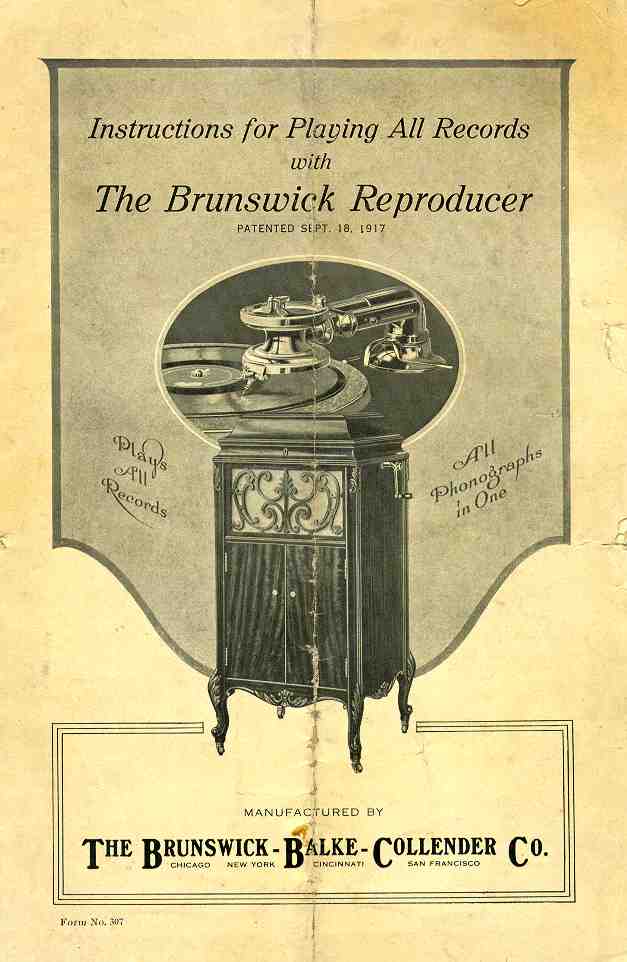
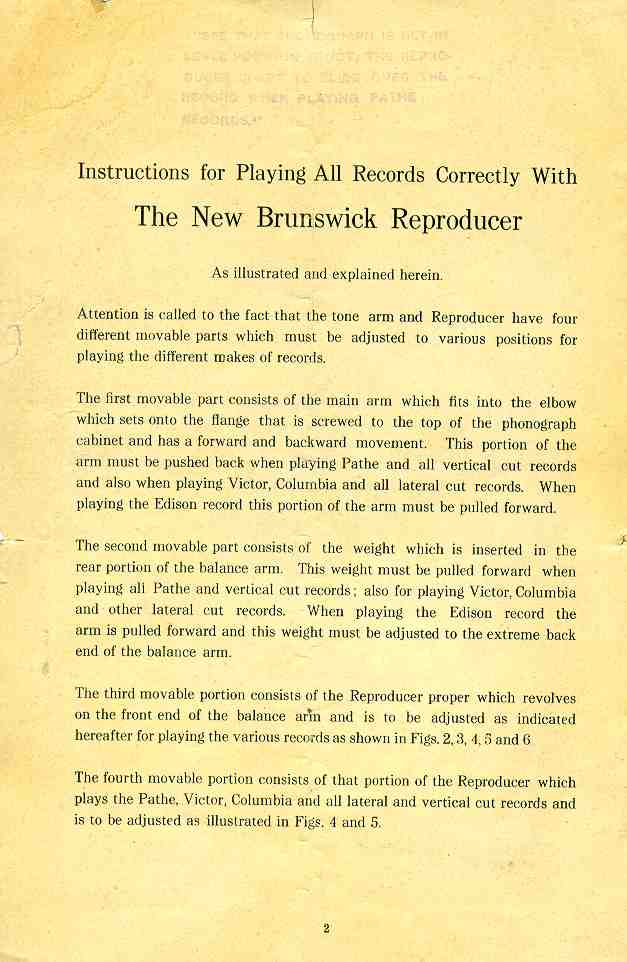
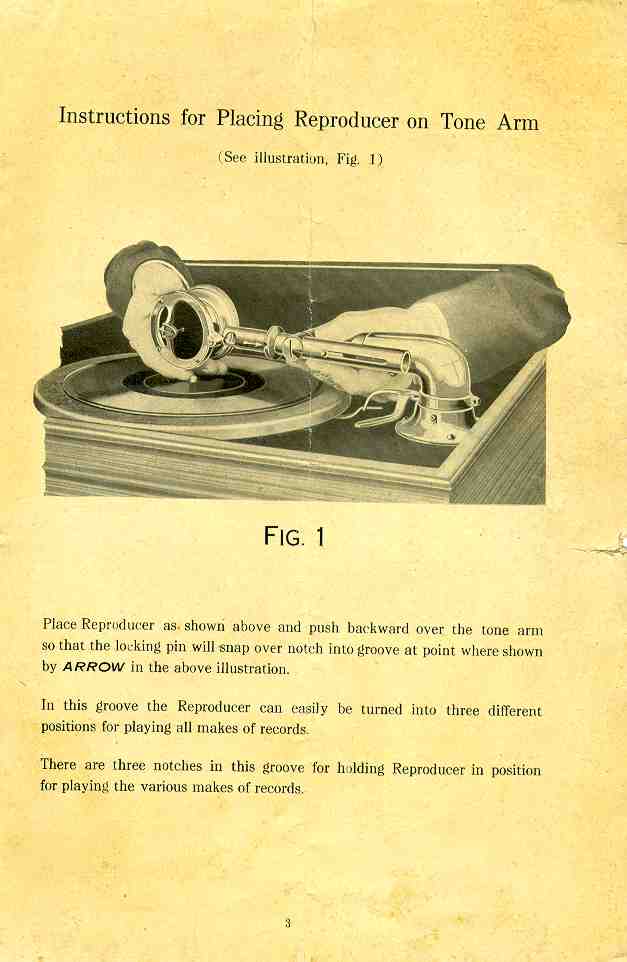
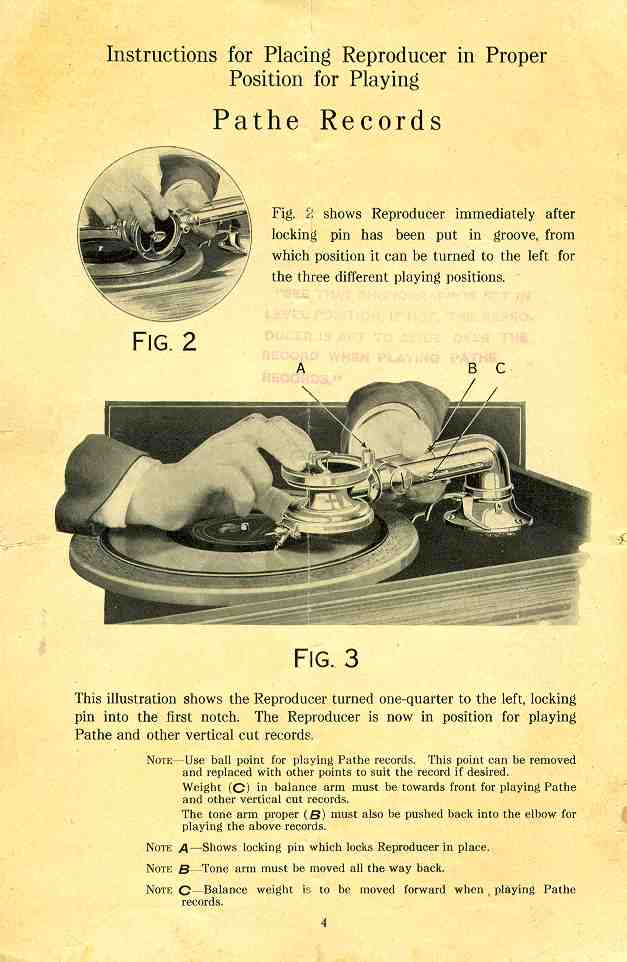

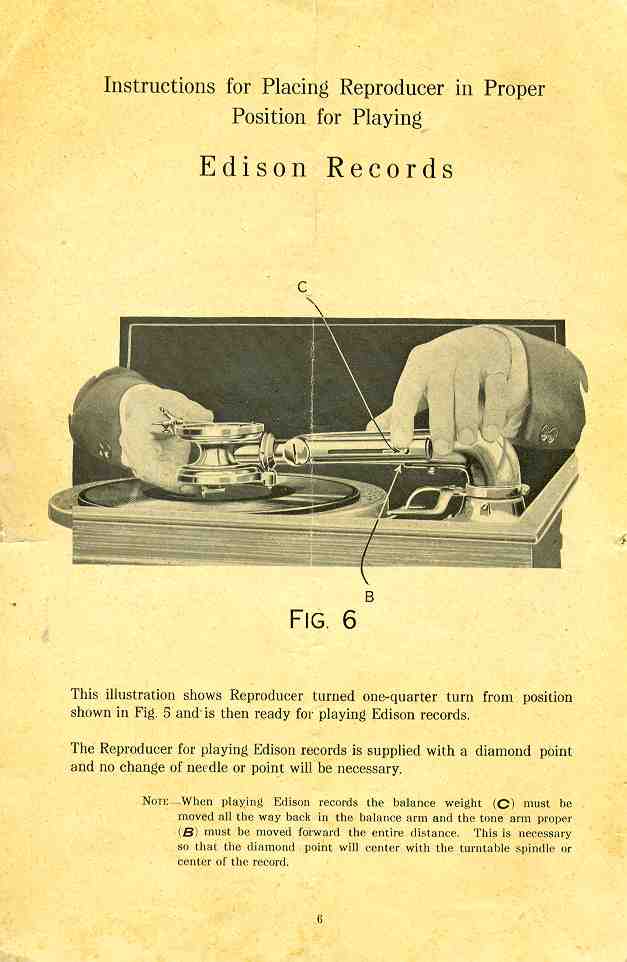

1925 -- Victor meets with Bell Laboratories early in the year to hear demonstrations of electrical recordings, and soon licenses the electric recording process, as well as Bell-proprietary exponential horn designs. These will become the Victor "Orthophonic" line of phonographs later in the year.
- Early in the year, Victrolas are produced with optional mounting space and provisions for aftermarket radio installations
- Victor sales drop nearly 40% to an annual rate of 262,000 units
- Victor introduces the $15 VV 1-1 ($150 in today's money) tabletop phonograph, replacing the old VV-IV
- During the summer, Victor launches a "half-price" sale to unload stock of old-style Victrolas in anticipation of the Orthophonic debut.
-
-
New Orthophonic Victrolas are introduced for Christmas 1925; the products are highly successful, since the fidelity and volume are many times greater than the earlier Victrolas. The new products range from the $85 Consolette ($830 in today's money) up to the $275 Credenza ($2,700 today).
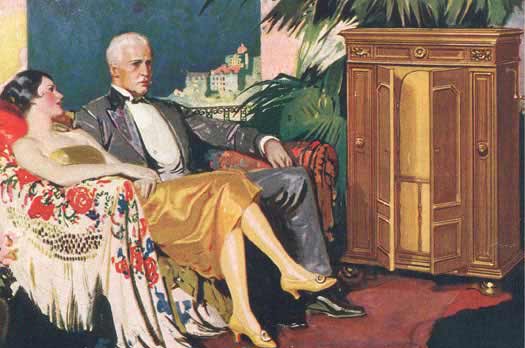
- Victor offers its first radio/phono combination console, the Alhambra I, selling for $350
1926 - New speaker developed at Bell Labs for Vitaphone sound system for motion pictures. It was capable of 100-5000 hz freq. range with an efficiency of 25% (compared to 1% today) needed due to low amp power of 10 watts.
1927 -- Victor introduces the first totally automatic record changer.
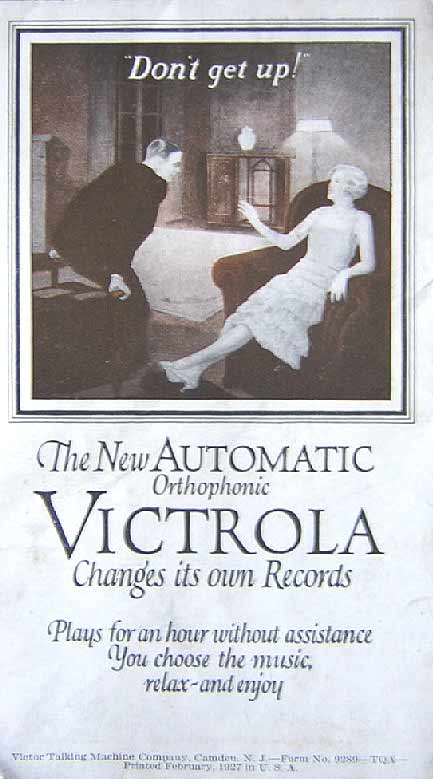
- From 1927-1928, more than 10,000 sold
- Price--$600 (same as mid-size Chevrolet)
- 5 foot x 5 foot cabinet
1928 - Herman J. Fanger filed patent No. 1,895,071 for the coaxial speaker, composed of a small high frequency horn with its own diaphragm nested inside or in front of a large cone loudspeaker, based on the variable-area principle that made the center cone light and stiff for high frequencies and the outer cone flexible and highly damped for lower frequencies.
1931 - RCA tried to market coarse groove discs of "Vitrolac" vinyl plastic that ran at 33-1/3 rpm "professional" speed, but it failed to replace popular 78 rpm consumer speed.
1932 - Bell Labs developes stereo recording
- Used two grooves.
- Not patented at the time because Bell could see no immediate commercial application for the technology.
1933 - Stereophonic sound demonstrated
- Harvey Fletcher, the father of stereo
- Called "stereophonic" because of its ability to give a spatial sense corresponding to stereoscopic vision
- Demonstrated before the National Academy of Sciences and many invited guests at Constitution Hall, Washington in the spring of 1933.
- Transmission was over wire lines from the Academy of Music in Philadelphia and three channels were used with microphones respectively at left, center and right of the orchestra stage and loud speakers in similar positions in Constitution Hall.
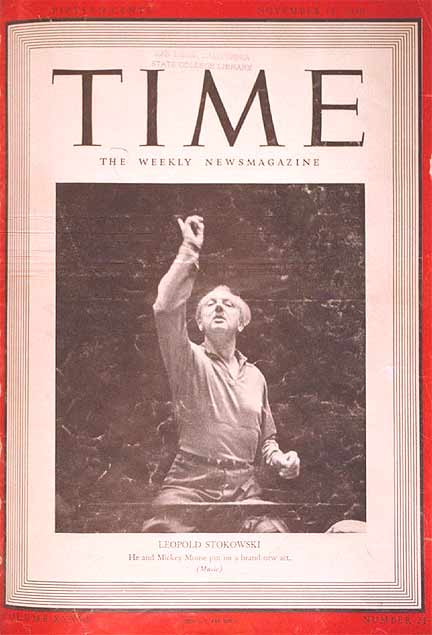
1947 - Big 6 record companies controlled majority industry, but teenagers rejected majority music style, giving opportunity to the rise of new small independent labels.
- Columbia
- Victor
- Decca
- Capitol
- MGM
- Mercury
1948 - Magnetic tape was adopted for recording.

1948 - Columbia introduced the first 12-inch 33-1/3 rpm micro-groove LP vinylite record with 23-minute per side capacity.
1949 - RCA Victor introduced 7-inch 45 rpm micro-groove Extended Play vinylite record and player; later records made of polystyrene. Capitol became the first major label to support all three recording speeds of 78, 45, 33-1/3 rpm.
1949 - Magnecord introduces two-channel tape recorders, and begins making stereo recordings of music for demonstration purposes.
1951 - War of the speeds ended as Victor sold LPs and Columbia sold 45s.

1954 - Acoustic Research introduced the small AR-1 bookshelf loudspeaker that used the acoustic suspension principle developed by company co-founders Edgar Villchur and Henry Kloss. This was soon followed by the $89 AR-2 and by the AR-3 with improved domed tweeters in 1958.
1954 - RCA Victor sold the first prerecorded open reel stereo tapes for $12.95.

1958 - World standard for stereo records established, and first stereo LPs sold; new generation of Hi-Fi components adopt stereo. Koss introduced stereo headphones.
1962 - Henry Kloss introduced the KLH Model 11 portable stereo, the first transistorized record player, with the changer/amplifier and two speakers folding into a three-piece suitcase.
1963 - Philips demonstrated its first compact audio cassette
- Used 1/8-inch tape that ran at 1-7/8 ips
- Sold the next year in the U.S. with the Norelco Carry-Corder dictation machine
- Demand for blank tape used for personal music recording was unanticipated by Philips.
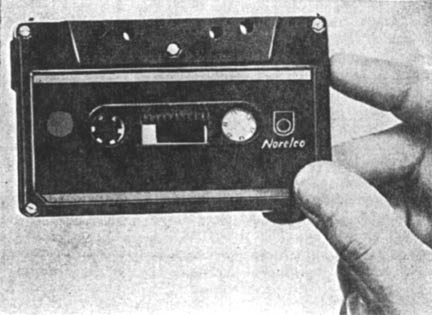

1966 - U.S. cars equipped with 8-track stereo cartridge tape players developed by William Lear (who founded the Learjet aviation company in 1962), Ampex, and RCA.
- Pre-recorded tapes at first sold in auto parts stores
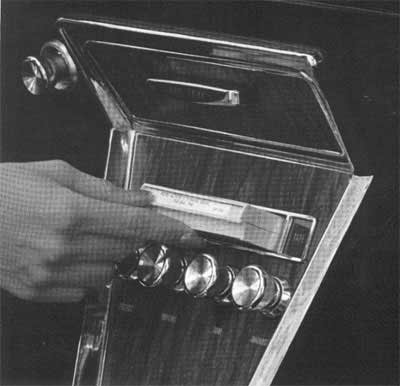
1969 - Dolby Noise Reduction introduced for pre-recorded tapes.
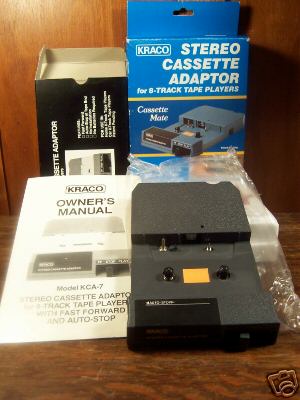
1980 - Sony introduces the Walkman
- Came up with idea in 1972
- Patented in 1977
- Cost $100-$140
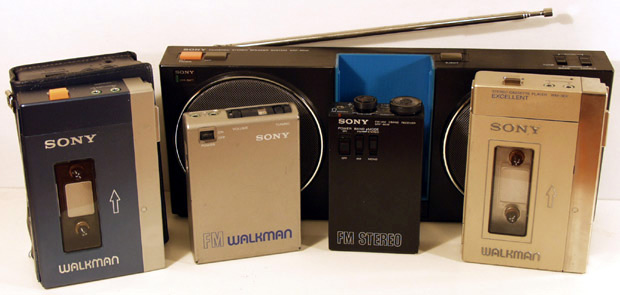
1982 - First digital audio 5-inch CD discs marketed.
- Merged listening to music with the computer revolution.
1994 - Global Big 6 control $30 billion record industry:
- Philips (owns Polygram, A&M, Mercury, Island)
- Sony (owns CBS Records)
- Matsushita (owns MCA, Geffen)
- Thorn-EMI (owns Capitol, Virgin)
- Time Warner
- Bertelsmann (owns RCA Records)
1997 - MP3.com founded in San Diego.
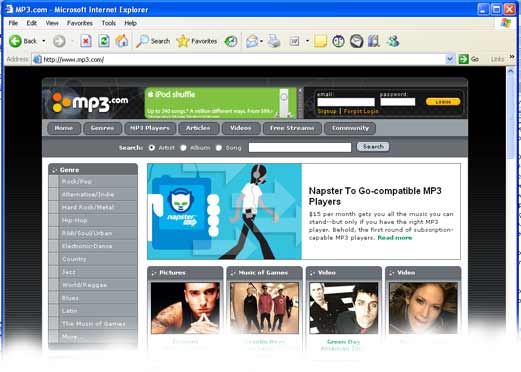
2001 - Apple Computer introduced the iPod portable music player and iTunes.
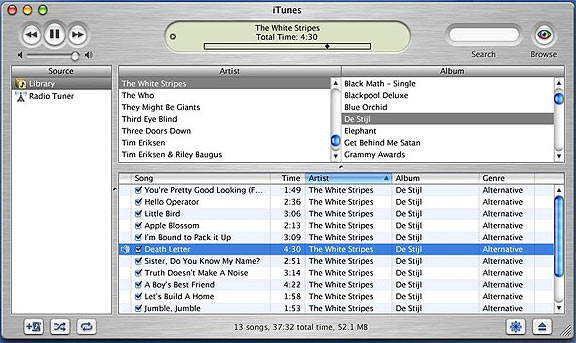
2004 - Four record companies control 84% of US market, 75% of global market.
- Universal (part of French Vivendi) 30% of US market
- Sony-BMG (Japanese/German) 25% of US market
- WMI (London-based, part of Phillips in the Netherlands) 12% of US market
- Warner (US) 15% of US market
2005 - Apple introduced the iPod Shuffle solid-state music player.

2005 - Which was soon replaced by the iPod Nano
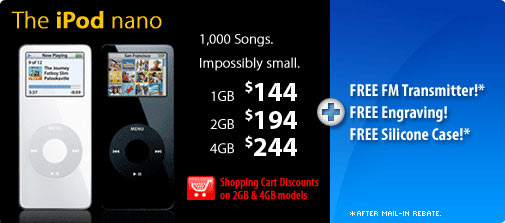
Today -- Format Wars---
- Apple steers iPod users toward Advanced Audio Codec (AAC), which most non-Apple devices cannot play.
- Downloads from Apple's iTunes Music Store come exclusively in a version of AAC that includes FairPlay, Apple's digital rights management technology, to prevent illegal copying and sharing of music.
- Most of Apple's rivals use Microsoft's Windows Media Audio (WMA) format, which does not play on iPods.
- Most online music stores apart from iTunes — like Napster (napster.com), Wal-Mart (musicdownloads.walmart.com) and Yahoo Music (music.yahoo.com) — sell downloads in the copy-protected Secure WMA file format.

|

